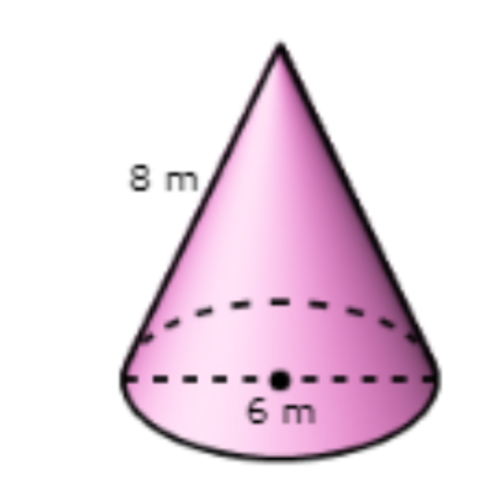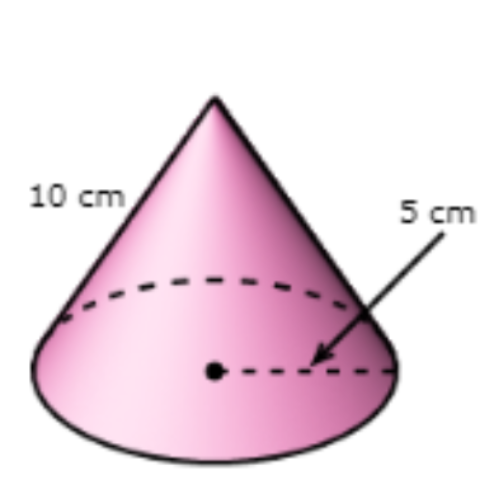Surface area of cones
key notes :
Definition of a Cone
- A cone is a three-dimensional geometric shape with a circular base and a curved surface that tapers to a single point (the apex).
Surface Area of a Cone
The total surface area of a cone includes two parts:
- Curved Surface Area (CSA)
- Total Surface Area (TSA)
Curved Surface Area (CSA) Formula
CSA = πrl
Where:
- r = Radius of the base
- l = Slant height
- π ≈ 3.1416
Total Surface Area (TSA) Formula
TSA = πrl + πr2
- This includes the curved surface area plus the area of the circular base.
Finding Slant Height (l)
- The slant height l can be calculated using the Pythagorean theorem:
l = √r2 + h2
- Where hhh is the vertical height of the cone.
Units of Measurement
- Surface area is measured in square units (e.g., cm², m²).
Real-Life Applications
- Used in designing ice cream cones, funnels, party hats, and architectural structures like domes.
Key Concept
- The curved surface is a sector of a circle when unfolded.
Common Mistakes to Avoid
- Confusing slant height lll with vertical height hhh.
- Forgetting to add the base area when finding TSA.
Learn with an example
What is the surface area of this cone?
Use 𝜋 ≈ 3.14 and round your answer to the nearest hundredth.

______ square metres
Find the radius and slant height of the cone.
radius=1/2 . diameter=1/2 . 6=3
slant height=8
Find the area of the base. Use 𝜋 ≈ 3.14.
Area of base = 𝜋r2
≈ 3.14 × 32
≈ 28.26
Find the lateral area.
Lateral area = 𝜋rs
≈ 3.14 × 3 × 8
≈ 75.36
Now add the areas to find the surface area of the cone.
Surface area = area of base + lateral area
≈ 28.26 + 75.36
≈ 103.62
The surface area of the cone is about 103.62 square metres.
What is the surface area of this cone?
Use 𝜋 ≈ 3.14 and round your answer to the nearest hundredth.

_______ square metres.
Find the radius and slant height of the cone.
radius=1/2 . diameter=1/2 . 2=1
slant height=3
Find the area of the base. Use 𝜋 ≈ 3.14.
Area of base = 𝜋r2
≈ 3.14 × 12
≈ 3.14
Find the lateral area.
Lateral area = 𝜋rs
≈ 3.14 × 1 × 3
≈ 9.42
Now add the areas to find the surface area of the cone.
Surface area = area of base + lateral area
≈ 3.14 + 9.42
≈ 12.56
The surface area of the cone is about 12.56 square metres.
What is the surface area of this cone?
Use 𝜋 ≈ 3.14 and round your answer to the nearest hundredth.

_____square centimetres
Find the radius and slant height of the cone.
radius = 5
slant height = 10
Find the area of the base. Use 𝜋 ≈ 3.14.
Area of base = 𝜋r2
≈ 3.14 × 52
≈ 78.5
Find the lateral area.
Lateral area = 𝜋rs
≈ 3.14 × 5 × 10
≈ 157
Now add the areas to find the surface area of the cone.
Surface area = area of base + lateral area
≈ 78.5 + 157
≈ 235.5
The surface area of the cone is about 235.50 square centimetres.
let’s practice!

